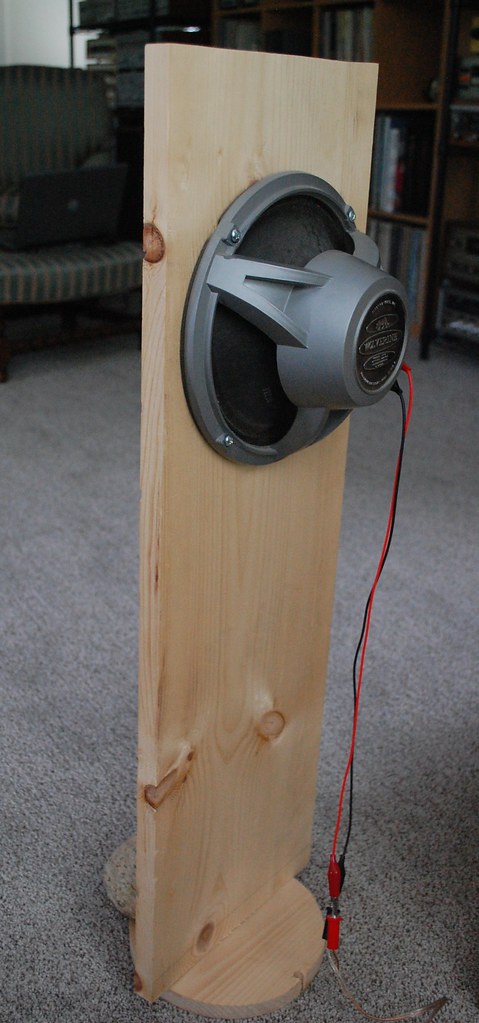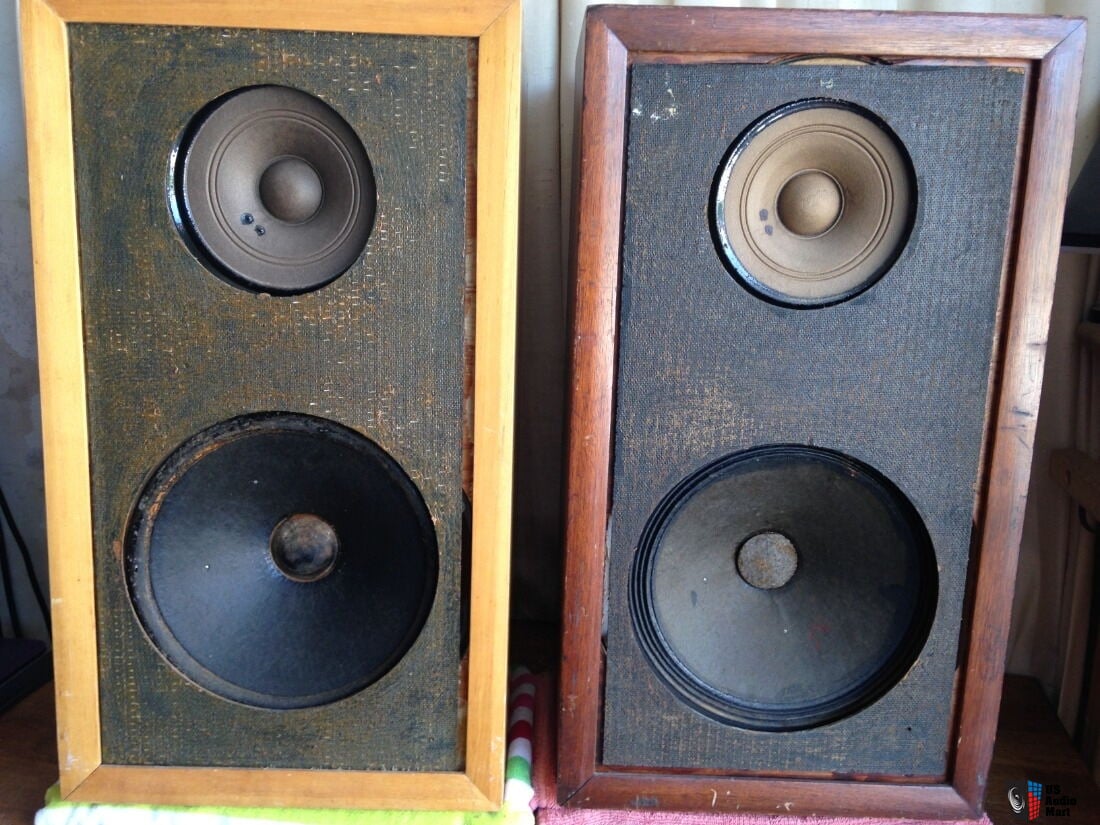That is a fascinating speaker having an 8 inch, um... tweeter?
Do you know about Edgar Villchur's (Acoustic Research's) first loudspeaker, the AR-1 of the mid to late 1950s?
The AR-1 was the first commercial "acoustic suspension" loudspeaker. The AR-1's "tweeter" was the famous Western Electric (later Altec) 755(A) -- which, today, is worth far, far more than the AR-1 in which one might, if one were lucky, find one.

The 755 is an 8-inch 'fullrange' (extended range) driver, which was used as the (for lack of a better word) tweeter to extend treble response of the AR-1.
The EV Leyton originally used an EV "Wolverine" LS-8 twincone "fullrange" driver as its "tweeter". The LS-8 is a nice little driver -- not in the same league as the 755A... but a nice little driver. I have... umm...
a few LS-8s "in stock" here.


Here's one of the LS-8s installed in a really cheezy 'test baffle' at one point a few years back

Here's another LS-8
in situ as the midrange driver of the next model up from the Leyton -- the EV Esquire. The Esquire added an EV T-35B as a proper tweeter

The Esquire is a darned fine sounding little loudspeaker... similar in performance to Klipsch's Heresy but without the screechy MR horn, a better-behaved tweeter*,
and more bass.


... youse guyses pulled me
off-topic... again! 
________________
* For whatever reason, the T35B with EV's simple XO is far less ear-gouging (to me) than was the EV T35 in a Heresy with Col. Klipsch's XO. EV generally got better sound out of the T35 family members (e.g., EV coaxes that used them, as well as speaker systems) than other manufacturers who used them in their own designs.



